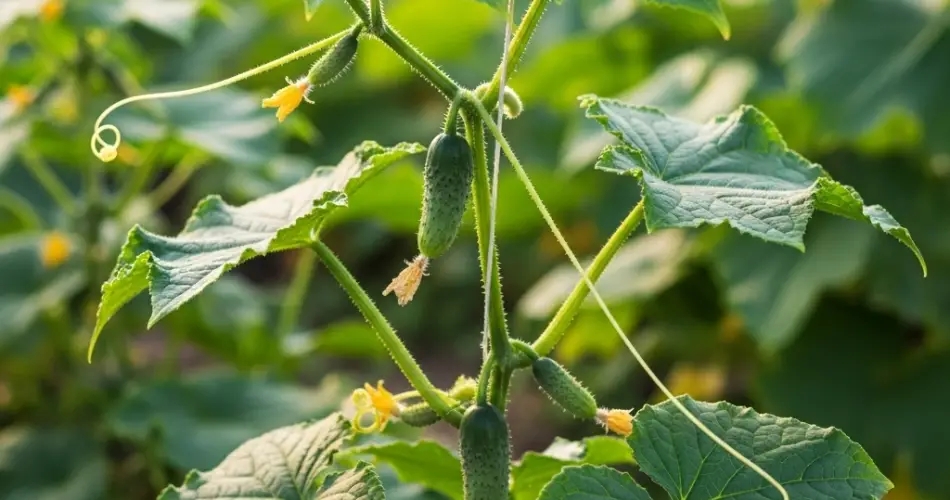Cucumbers are one of the most popular vegetables to grow in home gardens. Their crisp texture and refreshing flavor make them a favorite for salads, pickles, and snacks. Growing cucumbers successfully and harvesting a bountiful crop requires some attention to their specific needs. With proper care, you can enjoy a steady supply of fresh cucumbers all season long.
This article will guide you through the essential steps to care for cucumber plants so you can maximize your harvest of delicious, fresh fruit.
1. Choose the Right Variety
The first step to a successful cucumber harvest is choosing the right variety for your garden and climate. There are two main types of cucumbers: slicing cucumbers, which are eaten fresh, and pickling cucumbers, which are best suited for preserving. Some varieties are better adapted to hot weather, while others thrive in cooler climates.
Look for disease-resistant varieties if possible, as cucumbers can be prone to powdery mildew and other fungal issues. Starting with healthy seedlings or seeds from a reputable source will give you a good head start.
2. Planting Cucumbers Properly
Cucumbers love warmth and sunlight. Plant them after the danger of frost has passed and when soil temperatures reach at least 60°F (15°C). Choose a location that receives full sun for at least six to eight hours a day.
Plant cucumbers in well-draining soil rich in organic matter. Adding compost or well-rotted manure before planting helps provide the nutrients cucumbers need. Space plants 12 to 18 inches apart in rows that are about 3 to 6 feet apart, depending on the variety.
If space is limited, consider growing cucumbers vertically using trellises or cages. This helps improve air circulation, reduces disease risk, and makes harvesting easier.
3. Watering and Moisture Management
Cucumbers require consistent moisture to develop tender, juicy fruit. Inconsistent watering can lead to bitter or tough cucumbers, or cause the fruit to develop poor shape.
Water cucumber plants deeply at least once or twice a week, providing about 1 to 2 inches of water. During hot or dry periods, increase watering frequency. Avoid wetting the leaves when watering to minimize the risk of fungal diseases.
Mulching around the base of the plants helps retain soil moisture, suppress weeds, and regulate soil temperature.
4. Feeding and Fertilization
Cucumbers are heavy feeders and benefit from regular fertilization. Start with a balanced fertilizer or organic amendments like compost at planting time.
As the plants grow and start flowering, switch to a fertilizer higher in potassium and phosphorus to support fruit development. Liquid feeds such as fish emulsion or seaweed extract applied every two weeks can promote healthy growth.
Avoid excess nitrogen fertilizer, which encourages leafy growth at the expense of fruit production.
5. Supporting Growth and Preventing Disease
Cucumbers grown on the ground can suffer from soil-borne diseases and pests. Growing them vertically on trellises not only saves space but helps reduce these problems.
Watch for common pests like cucumber beetles, aphids, and spider mites. Regularly inspect plants and use natural pest control methods such as neem oil or insecticidal soap when needed.
Powdery mildew is a frequent fungal issue for cucumbers. To prevent it, provide good air circulation by spacing plants properly, watering at the base, and removing any affected leaves promptly.
6. Pollination and Flower Care
Cucumbers rely on pollinators such as bees for fruit production. Having a healthy population of pollinators nearby increases the chances of flowers being pollinated, which results in more fruit.
If you notice a lack of pollinators, hand pollinate flowers using a small paintbrush to transfer pollen from male to female flowers. This can significantly improve fruit set.
7. Harvesting Tips for Maximum Yield
Harvest cucumbers regularly to encourage continued fruit production. Pick fruits when they reach the desired size but before they become overripe and develop large seeds or bitter taste.
Use a sharp knife or scissors to cut cucumbers from the vine carefully. Avoid pulling or twisting, which can damage the plant.
Harvesting every 2 to 3 days during peak season ensures the plant’s energy is directed toward producing new fruit.
8. Extending the Growing Season
In cooler climates or shorter growing seasons, you can extend cucumber production by using row covers or growing cucumbers in containers indoors or in greenhouses.
Starting seeds indoors 3-4 weeks before the last frost date can give plants an early start. Transplant seedlings outdoors when conditions are favorable.
Regularly monitor plants and adjust care as needed to keep cucumbers productive throughout the season.
Final Thoughts
Caring for cucumbers to harvest lots of delicious fresh fruit is a rewarding gardening experience. By choosing the right variety, providing optimal growing conditions, managing water and nutrients carefully, and protecting plants from pests and diseases, you can enjoy a bountiful crop.
Remember to harvest frequently and provide support for climbing varieties to maximize yield and fruit quality. With consistent attention and the right techniques, your cucumber plants will thrive, filling your garden with crisp, flavorful cucumbers all season long.



